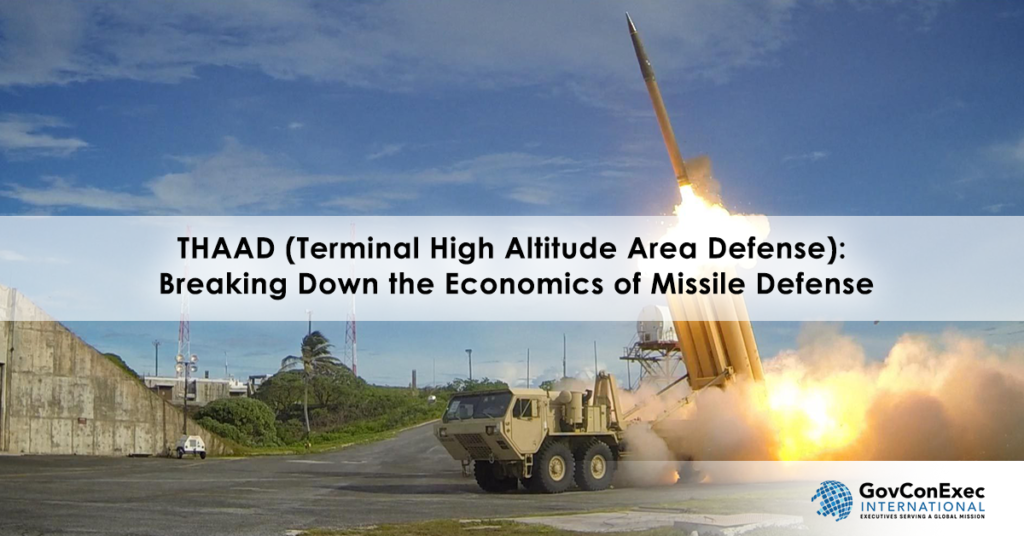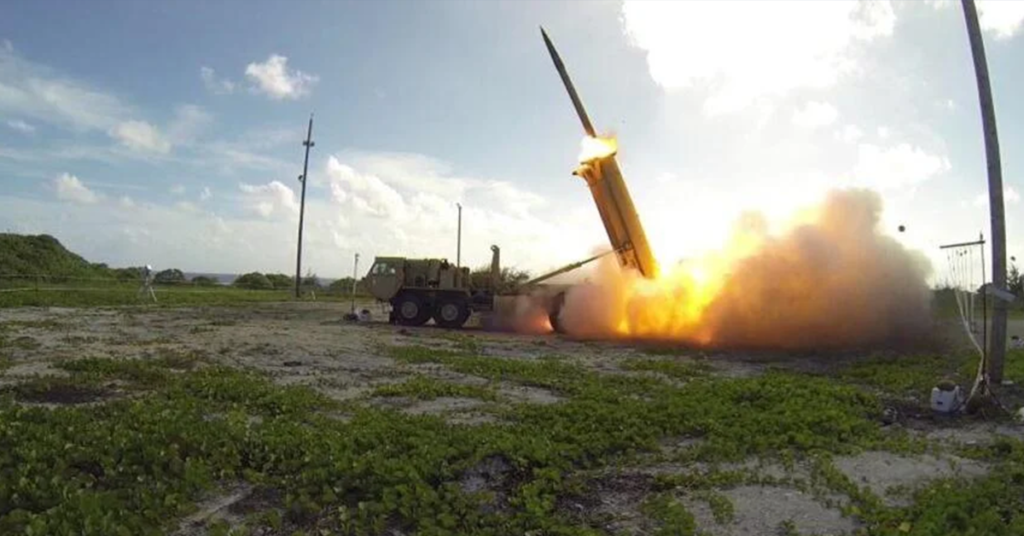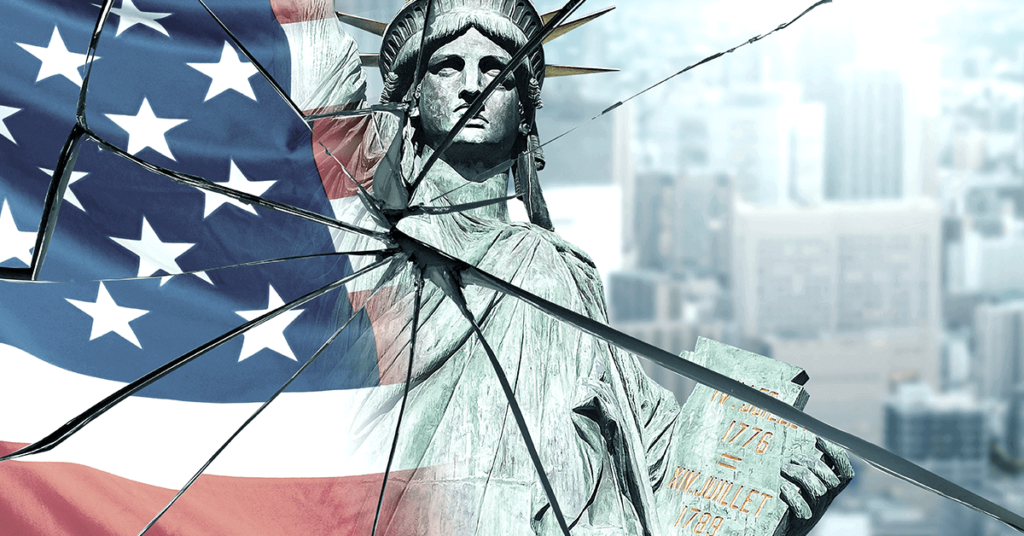
The THAAD or Terminal High Altitude Area Defense system has been a topic of great controversy since the program’s inception in 1987.
This article examines the impact of THAAD, delving into its strategic significance, geopolitical implications, and the concerns raised by various stakeholders.
Witness the discussions and exchange of ideas at the 10th Annual Defense R&D Summit which will happen on Jan. 31, 2024. Defense leaders, researchers, experts and decision makers will convene and talk about the latest developments in cutting-edge technology for the U.S. military.
Click here to register early!
What is THAAD?

The highly effective THAAD system is designed with a 100% intercept success rate during flight tests and has combat-proven defense capability against short-, medium-, and intermediate-range ballistic missiles.
Its Hit-to-Kill technology can destroy threats by directly impacting and neutralizing deadly payloads before reaching protected ground assets. To this day, THAAD continues its incremental capacity enhancements within its weapon system. This move is to improve its effectiveness against present and imminent threats continuously.
What are the effects of the THAAD in escalating tensions in regions where they are deployed?
THAAD and Patriot missile defense systems are activated throughout regions where they are stationed. Both of these systems were deployed in the Middle East.
“These steps will bolster regional deterrence efforts, increase force protection for US forces in the region, and assist in the defense of Israel,” Secretary of Defense Lloyd J. Austin III said.
However, this includes not only Israel, but South Korea.
Read about the implications that the THAAD has generated.
Political and environmental implications

The system’s installation in South Korea since 2017 was meant to bolster South Korea’s defense capabilities amid rising tensions due to North Korea’s nuclear weapons program.
Positioned to intercept and destroy incoming ballistic missiles, THAAD has been praised for its advanced technology and the protection it offers against potential threats.
However, its deployment has faced strong opposition from neighboring countries, including China, North Korea, and Russia. On one hand, these nations argue that THAAD’s powerful radar can compromise their missile systems and threaten their security.
On the other hand, many South Koreans also express their concerns over the environmental and health consequences these shields may pose. Once war breaks out in this specific region, naturally, those affected or who came in close contact with the effects of the nuclear explosives will suffer.
Chemical components in each missile may cause injuries like blindness, radiation sickness, and burns, which could lead to death. These are usually true for those closer to the blast area.
People who are on the missiles’ fallout path are still in danger of external or internal contamination, radiation illnesses, and contaminated water sources.
Economic implications

Bilateral ties took a nosedive in 2017 when South Korea installed the THAAD in response to the North Korean question. As a result, the Chinese government reacted by massively boycotting South Korean products, resulting in reduced exports.
That same year, though, China and South Korea signed the FTA (free trade agreement). In this deal, some boycotted products were even promoted by the FTA, reducing the impact of the boycott of commodities.
It also shows that political conflicts lead to economic implications. These issues can heavily affect popular opinion. In addition, it presents how national conflict can be easily resolved by a trade policy.
You can become a member of the Potomac Officers Club to get fresh news and be among the first to join its hosted GovCon events!
Click me!
What countries use the THAAD missile defense system?
Many countries have been attracted by the features and capabilities of this defense system. Some of them have ordered theirs while others are still waiting to decide. Below are the countries where THAAD systems are already deployed.
-
- Israel
-
- South Korea
-
- Romania
-
- United Arab Emirates
-
- Turkey
-
- USA
How much is the cost of obtaining a THAAD system?
A THAAD battery is built with six launcher vehicles. Each launcher is equipped with eight missiles and two mobile tactical operations centers or TOCs. Apart from that, it has an AN/TPY-2 ground-based radar (GBR).
The Army is planning to deploy a minimum of six THAAD batteries. The THAAD system includes missiles, ground-based radars (GBR), mobile launchers, support equipment, and a center for tactical operations.
The system’s approximate life cycle will cost around $14.9 billion (the amount was based on 1992 dollars). Currently, The THAAD system has an estimated cost of $23 billion, and moving forward, it will cost more.
The amount spent on this layered defense system is so high that it covers a considerable percentage of the U.S. military budget. Thus, it sparks controversy among decision-makers. Nonetheless, the protection it can give is also beneficial to the end users.
The reason for this unusual cost growth in the defense system’s price is the number of years it takes to develop the war machinery. Obviously, inflation is one of the top factors. It has to undergo several tests before arriving at a perfect system.
Therefore, the more trials it goes through, the more spending will occur.
Additionally, if the US deploys these defense systems and those currently under development, there will be more spending than present estimates suggest.
Furthermore, authorities involved in the production of the THAAD may turn to future research to shed light on the causes completely and systematically.
Check out the Challenges and Best Practices to Achieving Audit Readiness in the DoD Forum and learn why audit readiness is so important, which key challenges can stand in the way, how to best prepare for audits and which technologies can be the most effective.
What company was awarded the contract to produce THAAD?

On April 21, 2022, Lockheed Martin was awarded a contract to produce the THAAD weapon system. This U.S. government contract amounting to $74 million will include producing an eighth THAAD battery to deploy by 2025.
“This award demonstrates the U.S. government’s continued confidence in the THAAD Weapon System and in its unique endo- and exo-atmospheric defense capability,” said Don Nimblett, Vice President of Upper Tier Integrated Air and Missile Defense at Lockheed Martin Missiles and Fire Control.
“With 16 of 16 successful flight test intercepts and recent combat success clearly documenting the effectiveness of THAAD, adding an eighth battery will further enhance readiness against existing and evolving ballistic missile threats.”
In April, the Missile Defense Agency or MDA handed over a $180.3 million deal to Lockheed Martin to manufacture additional interceptors, including one-shot devices. This award was for the 15th lot of THAAD interceptor orders for the government, which modified the previous contract.
On December 7, 2023, Lockheed Martin delivered the 800th THAAD interceptor to the MDA. The design, manufacture, and integration are headed by Lockheed Martin Missiles and Fire Control, while other reliable subcontractors are named below:
-
- Raytheon
-
- Aerojet Rocketdyne
-
- Boeing
-
- BAE Systems
-
- Honeywell
-
- Oshkosh Defense
-
- MiltonCAT
About Lockheed Martin
With its main headquarters in Bethesda, Maryland, the Lockheed Martin Corporation is a company heavily involved in global security and aerospace, employing an estimated 116,000 people.
This company was formed after the merger of Lockheed Corporation and Martin Marietta in 1995.
Moreover, it is primarily focused and engaged in the research, development, design, production, integration, and sustainability of its advanced technological systems, products, and services.

